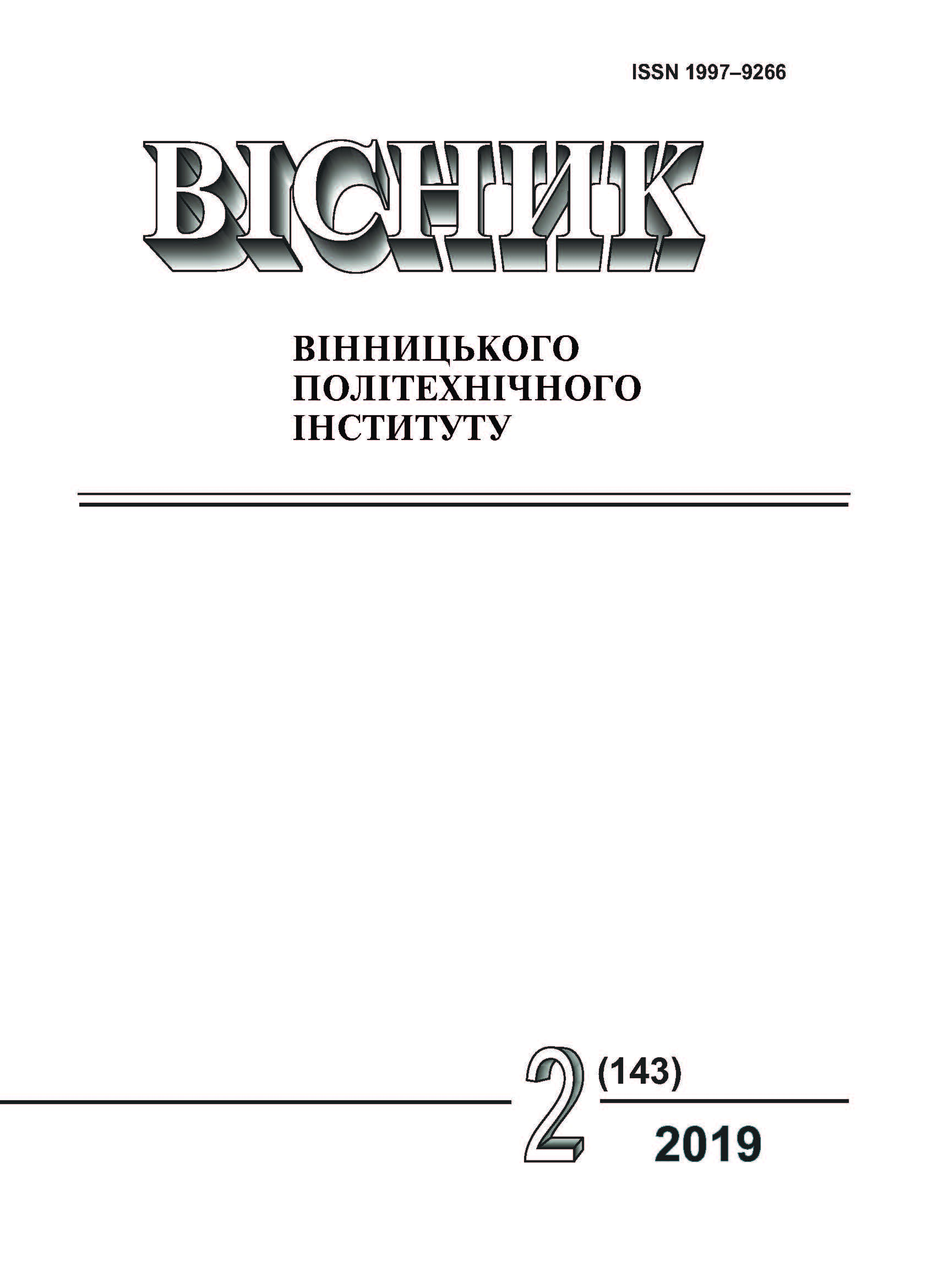Complex Purification of Industrial Phenolic Wastewater by Using Adsorbents from Natural Raw Materials
DOI:
https://doi.org/10.31649/1997-9266-2019-143-2-27-34Keywords:
natural adsorbent, phenols, ammonia, rhodanides, acid-activation, glauconite, zeolite, flocculantAbstract
There has been presented the data on the mineral composition of natural clays in order to select the optimum adsorbent in the technology of extracting from the liquid waste of the coke-chemical enterprise PRAT "DKHZ" in the city of Kamyanske phenols, rhodanides and ammonia. The advantages of the use of natural adsorbent glauconite in combination with cation flocculant CW 3279 in the complex purification of coke-chemical waste from phenols, rhodanides and ammonia are grounded, which are then fed to an active sludge with phenol- and rhodandestructive microorganisms. The process of activation of natural minerals — glauconite and zeolite with hydrochloric acid 7% HCl in the ratio of "mineral sorbent: acid solution" is used as 1: 6. The process of adsorption removal of phenols, rhodanides and ammonia from industrial wastewater in a laboratory installation with a stirrer with the use of glauconite, zeolite, bentonite, sunflower husk in the native form is explored; acid-activated zeolite and glauconite at doses of 2 g/dm3; bentonite and glauconite in combination with cation flocculant CW 3279 in volume of 5 ml/dm3 in the time interval 60—120 min. It has been experimentally determined that the most effective removal of phenols in industrial effluents from 410,74 mg/dm3 to 207,68 mg/dm3 occurs when using glauconite with cation flocculant CW 3279. It was investigated that when applying acid-activated zeolite with a dose of 2 g/dm3 and time contacting 120 min, reduction of the concentration of total ammonia from 1192,10 mg/dm3 to 340,60 mg/dm3, glauconite with cation flocculant CW 3279 — up to 510,90 mg/dm3 is provided. Degree of purification from rhodanide-ions by acid-activated zeolite has been reached in 1,5 times, whereas in the application of glauconite with cationic flocculant CW 3279 in 1,2 times. The regularities of adsorption extraction of phenols from model solutions have been established, which makes it possible to reduce their content from 1151,57 mg/dm3 to 355,36 mg/dm3 by glauconite in combination with cationic flocculant CW 3279 in the interval of 40—120 min. It is recommended to use glauconite at a dose of 2 g/dm3 in combination with cation flocculant CW 3279 — 5 ml/dm3 for 120 min drainage treatment. The sediment that is accumulated in the process of cleaning liquid waste is proposed to be processed and used as a binder in the paverment production.
References
А. В. Іванченко, О. О. Дупенко, М. А. Криворот, та М. Д. Волошин, «Дослідження технології біохімічної очистки стічних вод ПАТ ЄВРАЗ «Дніпродзержинський КХЗ,» Збірник наукових праць Дніпродзержинського державного технічного університету (технічні науки), № 1 (18), с. 195-197, 2014.
Виробнича інструкція апаратчика очистки стічних вод дільниці біохімочищення ПРАТ «Дніпровський КХЗ». Кам’янське,Україна, с. 90, 2016.
А. В. Іванченко, О. В. Назаренко, Д. О. Єлатонцев, К. Є. Хавікова, та К. О. Шутовська, «Дослідження процесів вилучення фенолів, фосфатів та нітратів зі стічних вод,» Міжнароднa науково-практична конференція, Prospects for the development of technical sciences in EU countries and Ukraine, Wloclawek, Republic of Poland, с. 121, 2018.
А. В. Іванченко, В. І. Карлаш, Д. О. Єлатонцев, та А. С. Данельська, «Застосування кислотно-активованого цеоліту в технології очищення стічних вод від нітратів,» Вісник Вінницького політехнічного інституту, № 5, с. 1-6, 2018.
В. С. Білецький, Мала гірнича енциклопедія. Донецьк: Східний видавничий дім, 2004. 640 с.
Сайт ООО»Глауконит» [Электронный ресурс] [Режим доступа] http://www.glaukos.ru .
Н. А. Хоп’як, «Глауконіт (Глауконітоліт). Характеристика гігієнічних та екосорбційних властивостей (огляд),» Довкілля та здоров’я, № 3, с. 68, 2012.
Т. З. Лыгина, О. А. Михайлова, А. И. Хацринов, и Т. П. Конюхова, «Технологии химической активации неорганических природных минеральных сорбентов,» Казань, Россия: КГТУ, с 120, 2009.
Технологическая инструкция установки биохимической очистки сточных вод теплосилового цеха ПАО «ЕВРАЗ Днепродзержинский КХЗ.» Днепродзержинск, Украина, с. 9, 2013.
Г. Г. Чуянов, Хвостохранилища и очистка сточных вод. Екатеринбург: УГГГА, с. 246, 1998.
Д. О. Єлатонцев, А. В. Іванченко, и О. А. Крюковська, «Дослідження та математичний опис впливу температури на кінетику вилучення фосфатів і зважених речовин зі стічних вод», Вісник Кременчуцького національного університету імені Михайла Остроградського, № 2(97), с. 70-75, 2016.
В. М. Кагасов, и Е. К. Дербышева, Очистка сточных вод коксохимических предприятий. Екатеринбург: Полиграфист, с. 189, 2003.
Л. Д. Глузман, и И. И. Эдельман, Лабораторный контроль коксохимического производства. Москва: Металлургия, с. 212, 1968.
Downloads
-
PDF (Українська)
Downloads: 336
Published
How to Cite
Issue
Section
License
Authors who publish with this journal agree to the following terms:
- Authors retain copyright and grant the journal right of first publication.
- Authors are able to enter into separate, additional contractual arrangements for the non-exclusive distribution of the journal's published version of the work (e.g., post it to an institutional repository or publish it in a book), with an acknowledgment of its initial publication in this journal.
- Authors are permitted and encouraged to post their work online (e.g., in institutional repositories or on their website) prior to and during the submission process, as it can lead to productive exchanges, as well as earlier and greater citation of published work (See The Effect of Open Access).





